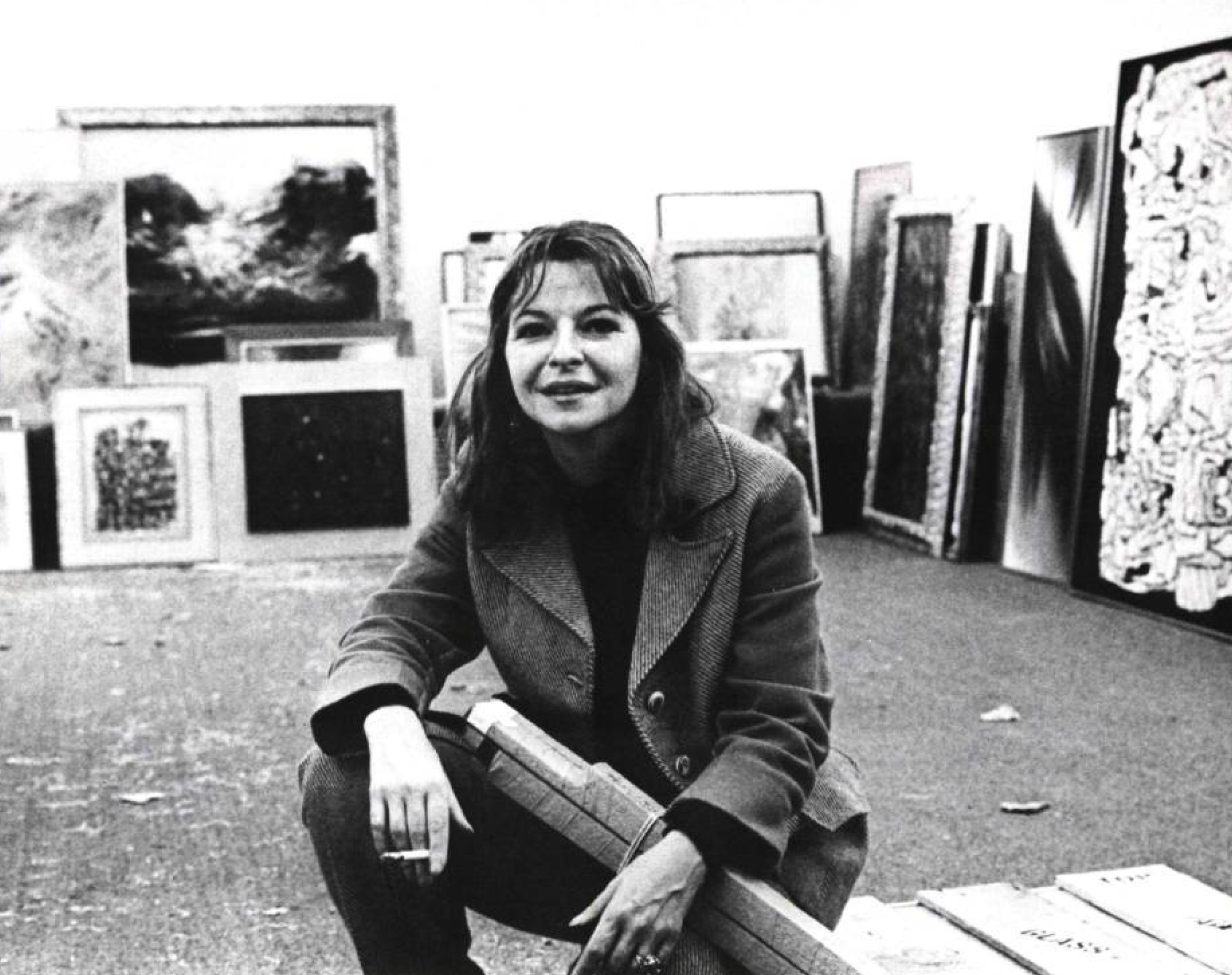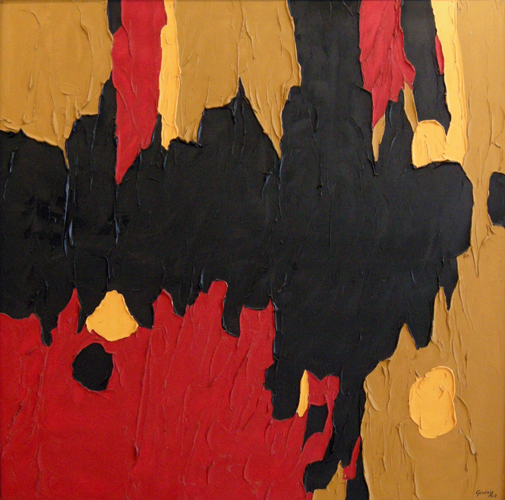Lise Gervais
Lise Gervais (1933-1998) - Artist Biography
Lise Gervais was fifteen years old when the Automatistes published their manifesto, le Refus global, in August 1948; it was only a few years later, during her studies at l’Ecole des Beaux-Arts in Montreal under Stanley Cosgrove and Jacques Tonnancour, that she would become completely enamored by the possibilities of abstract expressionism. Gervais was a tumultuous personality – her early years included a rocky relationship with Pierre Gauvreau and major disagreements with her contemporaries, Guido Molinari and les Plasticiens over their geometric approach to abstract painting. A mother at the age of twenty-two, Gervais had to earn a living by teaching drawing and working as a make-up artist at Radio-Canada. In 1958, she saved enough money to travel to Europe where she met with Bordaus and Riopelle and, while visiting several museums, became particularly influenced by the works of Goya.
Upon her return to Canada, her works were shown in several group exhibitions in Montreal, Quebec, Trois- Rivières, Chicoutimi, Granby, Sherbrooke and Ottawa. Le Devoir critic Yves Lasnier became a huge fan and championed the young artist. In 1961 Gervais got her first solo exhibition at Galerie Denyse Delrue in Montreal and Gallery Moos in Toronto soon after. Her career began to soar after she won the prestigious Dow Prize at the Spring Salon at the Montreal Museum of Fine Arts with many avant-garde galleries competing for her works and the Place-Royale Group calling on her frequently to design sets for their world-renowned dance performances. During the 60s and 70s, she also taught at the École des Beaux- Arts de Montreal and Concordia University for almost 16 years. In 1967, Gervais exhibited at the National Museum of Fine Arts of Quebec as well as at the Art Gallery of Ontario in Toronto. In 1970 she exhibited at the Museum of Contemporary Art of Montreal and the Rodin Museum in Paris. In 1984, she was elected president of the Council of Artists, Painters Quebec. Although she lived in Montreal, Gervais spent most of her time enjoying the solitude of the Laurentian forest and lakes north of her home. Although she battled a rare skin disease for much of her life, Gervais continued to paint regularly until her death at the age of sixty-five.
Selected Exhibitions:
1961 Galerie Denyse Delrue, Montreal; Montreal Museum of Fine Arts
1964 Galerie du Siecle, Montreal; National Gallery of Canada, Ottawa
1967 Musee du Quebec; Art Gallery of Ontario, Toronto
1970 Galerie du Montreal; Musee d’art contemporain de Montreal; Musee Rodin, Paris
1983 Bishops University Art Gallery, Lennoxville, PQ
1990 Galerie d’Art du College Edouard-Montpetit, Longueuil
1993 Galerie d'art Contemporains Montreal PQ, curated by Stanley Borenstein, Karina Holosko, Peter G Pereira
2003 McIntosh Gallery, University of Western Ontario, London
Selected Collections:
National Gallery of Canada
Montreal Museum of Fine Arts
Musee d’art contemporain de Montreal
Albright-Knox Museum, Buffalo, N.Y.
Concordia University, Montreal
Queen’s University, Kingston
Hart House, University of Toronto
York University, Toronto
Samuel Zacks Collection, Toronto
Samuel Bronfman Collection, Montreal
Charles Delloye Collection, Paris
Universite de Montreal Collection
Musee d’art de Joliette
Artist Specialization: A follower of the Automatistes, Gervais’ approach emphasized the materiality of the paint itself, which she applied in thick layers with a palette knife. Using this technique, with virtually no mixing of pigment, she was able to maintain the brilliance of pure colour, as exemplified by composition.




